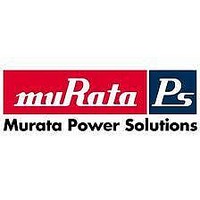ADC-207MC Murata Power Solutions Inc, ADC-207MC Datasheet - Page 3

ADC-207MC
Manufacturer Part Number
ADC-207MC
Description
Analog To Digital Converter
Manufacturer
Murata Power Solutions Inc
Available stocks
Company
Part Number
Manufacturer
Quantity
Price
DATEL
(+REFERENCE = +5.12V, –REFERENCE = ground, MIDPOINT = no connection)
NOTE: The reference should be held to ±0.1% accuracy or better. Do not use the +5V
power supply as a reference input without precision regulation and high frequency
decoupling.
Values shown here are for a +5.12V reference. Scale other references proportionally.
Calibration equipment should test for code changes at the midpoints between these
center values shown in Table 1. For example, at the half-scale major carry, set the
input to 2.54V and adjust the reference until the code fl ickers equally between 63 and
64. Note also that the weighting for the comparator resistor network leaves the fi rst
and last thresholds within 1/2LSB of the end points to adjust the code transition to the
proper midpoint values.
ADC-207 OPERATION
The ADC-207 uses a switched capacitor scheme in which there is an auto-
zero phase and a sampling phase. See Figure 1 and Timing Diagram. The
ADC-207 uses a single clock input. When the clock is at a high state (logic
1), the ADC-207 is in the auto-zero phase (Ø1). When the clock is at a low
state (logic 0), the ADC-207 is in the sampling phase (Ø2). During phase
1, the 128 comparator outputs are shorted to their inputs through CMOS
switches. This serves the purpose of bringing the inputs and outputs to the
transition levels of the respective comparators. The inputs to the compara-
tors are also connected to 128 sampling capacitors. The other end of the
128 capacitors are also shorted to 128 taps of a resistor ladder, via CMOS
switches. Therefore, during phase 1 the sampling capacitors are charged to
the differential voltage between a resistor tap and its respective comparator
transition voltage.
temperature performance. During phase 2 (Ø2) the input voltage is applied to
the 128 capacitors, via CMOS switches. This forces the comparators to trip
either high or low. Since the comparators during phase 1 were sitting at their
transition point, they can trip very quickly to the correct state. Also during
phase 2, the outputs of the comparators are loaded into internal latches
which in turn feed a128-to-7 encoder. When going back into phase 1, the
output of the encoder is loaded into an output latch. This latch then feeds the
3-state output buffer.
version, the ADC-207 requires a positive pulse followed by a negative pulse
followed by a positive pulse. Continuous conversion requires one cycle/
sample (one positive pulse and one negative pulse). The 3-state buffer has
®
*Note that the overfl ow code does not clear the data bits.
(Center Value)
Analog Input
This eliminates offset differences between comparators and yields better
This means that the ADC-207 is of pipeline design. To do a single con-
+0.04V
+1.28V
+2.52V
+2.56V
+2.60V
+3.84V
+5.08V
+5.12V
0.00V
OUTPUT CODING
+1/2FS + 1LSB
+1/2FS – 1LSB
Overfl ow
+1/4FS
+1/2FS
+3/4FS
+1LSB
Code
Zero
+FS
®
• 11 Cabot Boulevard, Mansfi eld, MA 02048-1151 USA • Tel: (508) 339-3000 • www.datel.com • e-mail: help@datel.com
Overfl ow
0
0
0
0
0
0
0
0
1
Table 1. ADC-207 Output Coding
MSB
1
0
0
0
0
1
1
1
1
1
2
0
0
1
1
0
0
1
1
1
two enable lines, CS1 and CS2. Table 2 shows the truth table for chip select
signals. CS1 has the function of enabling/disabling bits 1 through 7. CS2
has the function of enabling/disabling bits 1 through 7 and the overfl ow bit.
Also, a full-scale input produces all ones, including the overfl ow bit at the
output. The ADC-207 has an adjustable resistor ladder string. The top end,
idle point, and bottom end are brought out for use with applications circuits.
respectively. In typical operation +REFERENCE is tied to +5V, –REFERENCE
is tied to ground, and MIDPOINT is bypassed to ground. Such a confi gura-
tion results in a 0 to +5V input voltage range. The MIDPOINT pin can also
be tied to a +2.5V source to further improve integral linearity. This is usually
not necessary unless better than 7-bit linearity is needed.
3
0
0
0
1
0
0
0
1
1
NOTE: Reduce the sample time (sample pulse) to 12ns to improve performance
above 20MHz. Such a confi guration will closely resemble an ideal sampler.
CLOCK
OUTPUT
DATA
These pins are called +REFERENCE, MIDPOINT and –REFERENCE,
4
0
0
0
1
0
0
0
1
1
CS1
0
1
0
1
5
0
0
0
1
0
0
0
1
1
7-Bit, 20MHz, CMOS Flash A/D Converters
6
0
0
0
1
0
0
0
1
1
CS2
LSB
AUTO
ZERO
Æ1
0
0
1
1
7
0
1
0
1
0
1
0
1
1
Table 2. Chip Select Truth Table
SAMPLE
Æ2
N
TIMING DIAGRAM
Decimal
Data Outputed
3-State Mode
3-State Mode
3-State Mode
17ns max.
255*
127
32
63
64
65
96
0
1
Bits 1-7
AUTO
ZERO
Æ1
N DATA
MDA_ADC-207.B03 Page 3 of 6
SAMPLE
N + 1
Æ2
ADC-207
Hexadecimal
17ns max.
(Incl. 0V)
Data Outputed
Data Outputed
Overfl ow Bit
3-State Mode
3-State Mode
00
01
20
3F
40
41
60
7F
FF
AUTO
ZERO
Æ1
N+1 DATA
SAMPLE
N + 2
Æ2







